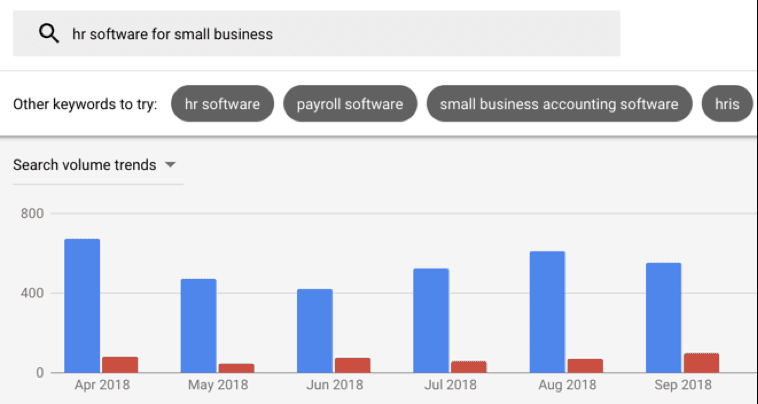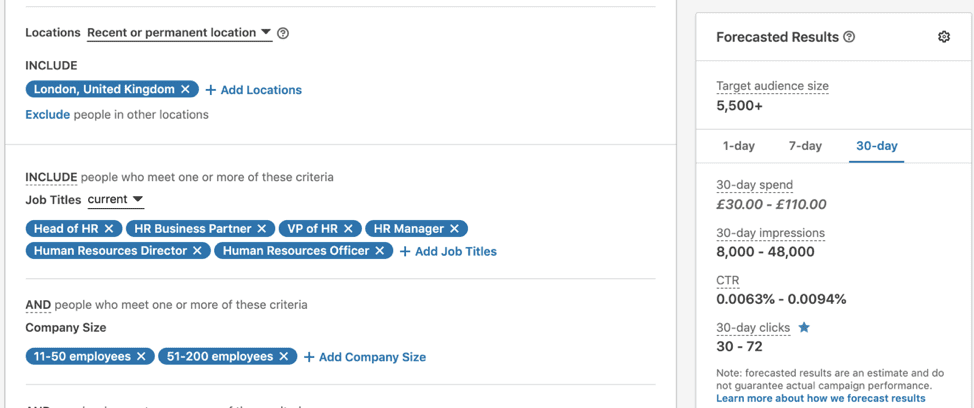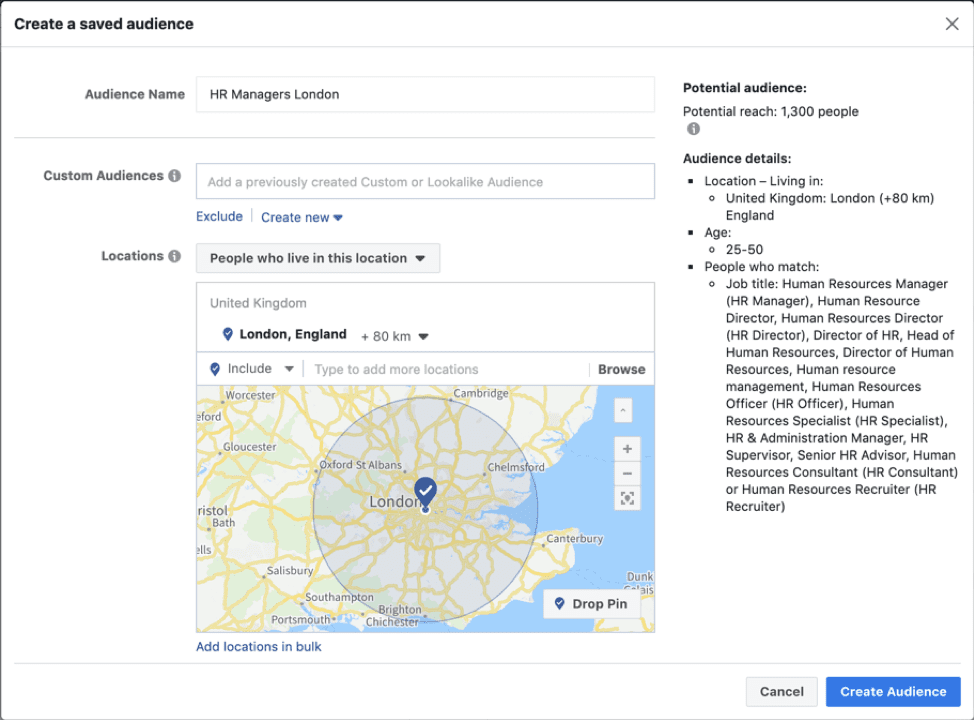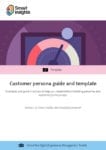It’s never been easier for B2B businesses to identify and target their ideal customers online.
“I have a great product or service but I just can’t seem to be able to find buyers.”
I hear this a lot. It’s one of the most frustrating things for a passionate business owner or manager with a solution that can solve a genuine problem for people.
For anyone who says “my product/service is for anyone that wants it”, this may be true; but it won’t help you with your marketing strategy.
Think about a sliding scale. At one end you have people who don’t, and probably never will have an interest in your solution.
At the other end, you have the person who recognizes they have a severe need, so much so that it pains them every day. They are looking but struggling to find a solution.

It goes without saying that you would want to start targeting people with a high need first and work backward from there. But depending on your niche, the numbers can be small and hard to target.
So how do you pinpoint the right buyers online and turn them into customers?
1. Define ‘the right buyer’
The focus here should be on identifying the types of people most likely to benefit from your product or service.
If you already have some customers, start by looking at their profiles and ask these questions:
- Do they tend to be male or female?
- Do they live in a particular country/region/town?
- Do they tend to be of a certain age?
- Do they tend to have a certain household income?
- Are they single? Married? Kids/no kids?
- Do they tend to work in a certain industry, have a particular job title or work for certain types of companies or a particular company?
- What are their hobbies or interests?
- Do they read particular magazines or visit certain websites?
- Is there a very specific problem they are trying to solve which perhaps they will search for in Google?
You may wonder how relevant some of these questions are, but they are crucial in helping you with the steps that follow.
If you don’t have existing customers, you may need to make some assumptions. But there are also some additional tricks you can use:
- Website analytics – Tools like Google Analytics and Facebook insights can indicate gender splits, age splits, as well as the geographical location of your website users. You can check which are the most engaged by looking at stats like ‘Average session duration’.
- Publisher media packs – if you think there is a particular magazine or website with a high readership of your target customer, contact them and ask for a media pack. This should contain demographic info on your target audience.
- Desk research – Simply making efforts to connect with the people you believe to be the right buyers. Linkedin is a great tool to help with this or tap into your personal network.
Think creatively and start to note down any useful character traits that will help you define the right buyer.
Taking an HR software company as an example, your ideal buyer profile may look like this:
- HR or recruitment manager or director
- Over three years of experience
- “Senior”, “Director” more likely than “Assistant” or “Manager”
- Company size 30-100
- Based in London or South East
- 60% female, 40% male
Remember that we are not saying that every customer looks like this. We are just saying that customers are more likely to look like this.
2. Define your offer
Now you know the kinds of people you are targeting, you need to figure out what to say to them. This could be in a targeted advert, a piece of content, or even a face to face conversation.
Obviously, with a targeted advert, you only have a small amount of space to get your message across, so you need to be very succinct.
Think about those people that are ‘problem aware’ and have a severe need for a solution. Although valuable, consider that the volume of these is likely to be small. You therefore also need your offer to grab the interest of those that are slightly towards the ‘problem unaware’ end of the scale.
Your offer should start by defining the problem, which they may not know exists, and then convey the value of your solution in solving it. The objective is to communicate sufficient value to them that their interest will be piqued and they will want to click your advert to find out more.
Here are the key elements you want to try and include:
- Recognition of their problem (in their ‘language’)
- How your product/service can help
- What special value you can offer that makes you different (and which is compelling enough for them to respond)
- Convey urgency/scarcity where possible (limited time/last few spaces remaining etc.)
Let’s take a law firm as an example:
Legal issues keeping you awake at night?
We’ll take care of your legal matters so you can focus on running your business.
100% satisfaction guarantee.
Contact us today for a free legal health check.
The great thing about digital marketing is that you can easily test a number of different offers and see what works best. So try a few variants.
3. Select your channels
So now you know who you’re after and what you are going to say, it’s time to select your channels. Your channel is “the route to your customer”. Essentially it’s the place where you will expose them to your offer.
There are a number of traditional advertising channels like newspapers, TV and radio, but these are expensive and outside the reach of most businesses. They are also inefficient, especially for B2B, as the majority of people who see or hear your ad will be outside of your target market.
Not only is the web in general a major source of information for B2B buyers, but in a recent study, 60% of B2B buyers reported that mobile specifically played a significant role in a purchase.
The case for prioritizing digital marketing as a key channel to source new customers is compelling.
Google Ads
The place to start here is with your ‘high need/problem aware’ customer who is struggling to find a solution. This person is likely to go to Google.
Google Ads has made setting up adverts very simple for business owners. If you haven’t already, we would recommend you go right ahead and set up a free account and select your keywords. Keywords are the words that your advert will appear for when the user searches for them in Google.
Make sure you focus on ‘high intent’ keywords so you capture people closest to the point of buying:
High intent keywords (problem aware and solution aware)
“HR software for small businesses”
“Best HR software”
Low intent keywords (problem aware but solution unaware)
“How to improve HR processes”
“HR best practice 2019”

Google keyword planner tells you how many monthly searches there are for your favoured search terms.
Linkedin Ads
Google is fantastic for targeting buyers with intent, but what about people who fit your target profile but aren’t searching on Google?
Linkedin Ads is a fantastic tool that lets you target by age, gender, location, job title and a number of other things. Like Google, it’s free to sign up and you can set up a test advert relatively quickly.

LinkedIn Campaign Manager tells you how many LinkedIn users fit your target criteria.
Facebook Ads
This may seem like an unusual channel to include for B2B marketing, but Facebook has enormous reach and powerful targeting capability.
In fact, most of the targeting capabilities you see in LinkedIn are also available in Facebook Ads, job title is a good B2B example. Just remember that people on Facebook tend to be in ‘leisure mode’ and, as such, may respond better to informative/interesting content than to a sales pitch.

Facebook Ads Manager tells you how many Facebook users fit your target criteria.
4. Setup your test B2B campaign
As you set up your test campaign, the ad platforms will give you an indication of the number of people who fit your chosen criteria e.g. HR professionals in London.
In the case of Google Ads, it will indicate to you the number of searches that take place for your chosen keywords.
You can start each campaign with a budget of as little as £5 per day. This may not sound much but the idea is to see whether the people you are driving to your website are actually sticking around and not dropping off straight away.
To help with this you should be using a tool like Google Analytics. It’s another free tool so there are no excuses for no analytics on your website. You will need to use Google Analytics to find the visitors you are sending from your campaign and check their behaviour.
For each campaign you test you will want to check:
- Bounce rate – This refers to the percentage of people who leave once they land on your website having clicked your ad. You want this to be as low as possible. A bounce rate of 30% indicates that for every ten visitors, three leave immediately and seven stay on your site. A bounce rate of 30% is quite good.
- Average session duration – This refers to the average amount of time people spend on your site. The higher the better.
- Pages per session – This refers to the average number of pages that people look at once they land on your site. Again, higher is better.
With a few campaigns running, you will soon begin to see which channels are working better than others. From here you can start refining your offer or tweaking your target audience.

Google Analytics will tell you whether people are ‘bouncing off’ your site or staying to have a look around.
Final thoughts
Bear in mind the ‘marketing rule of seven’, which suggests that a prospect needs to come across your offer seven times before they consider taking action. So don’t expect immediate results. You need to be consistently visible over a period of time. This is especially the case in B2B where buying decisions are slow and can take months.
For that reason, it’s useful to take a long-term, multi-channel approach to your marketing and sales generation efforts.
Using this methodology, you can begin to start pinpointing the right buyers, increasing your visibility and ultimately driving more enquires and sales.
